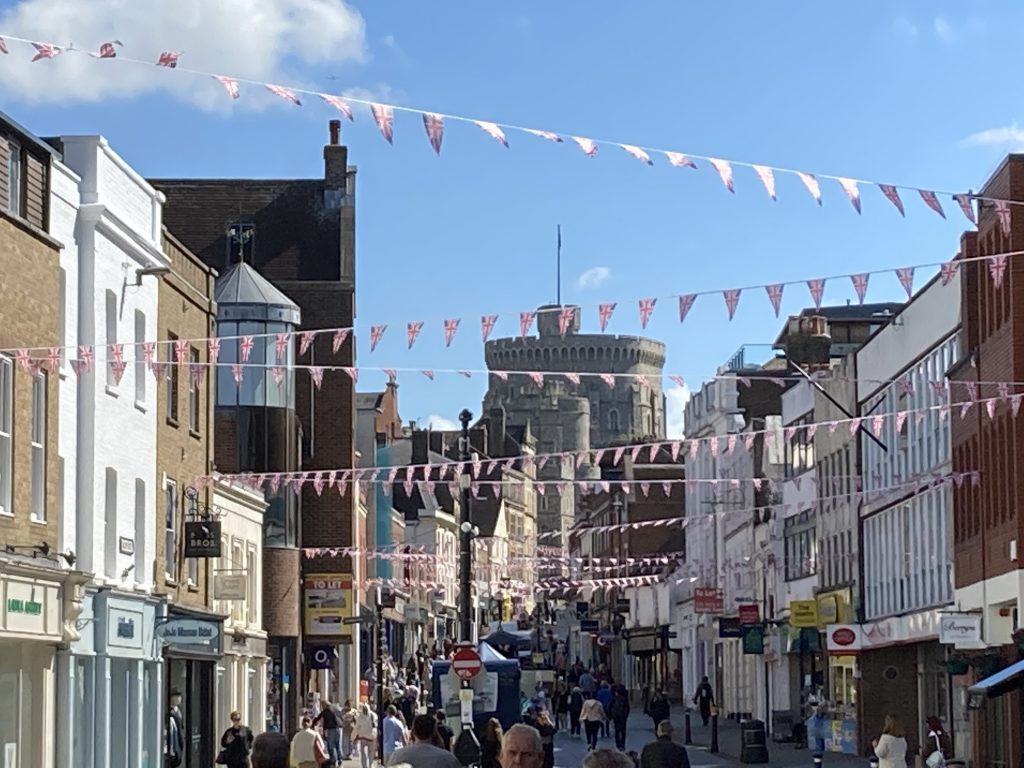A HISTORY OF WINDSOR
Prehistory
The story of the settlement begins in the dawn of prehistory. The last ice age saw glaciers within 20 miles of where Windsor now stands. As the ice melted, the massive quantities of water altered the path of the river Thames. It was once just a tributary of the mighty Danube but the rising seas flooded Doggerland and Great Britain became an island.
The river provided the first easy path through the growing forests so we believe that many settlers would have passed the bluff where the castle now stands while heading west into unknown lands. Evidence of Deer, Horses, Mammoth and Rhinoceros all point to plenty of hunting opportunities for the first peoples to arrive after the ice retreated. A mammoth tusk can be found in the Windsor Museum.
For the next eight thousand years or so, hunter gatherers and later on, farmers left their mark on the landscape. The Thames valley is awash with flint tools and the evidence of their manufacture. For instance, this mesolithic blade was one of hundreds found on just one morning of fieldwalking further west along the Thames valley.
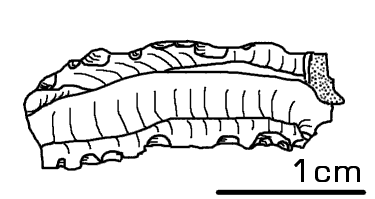
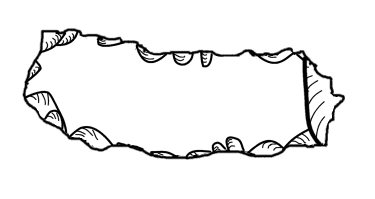
In 2018 Archaeologists uncovered a 5,500-year-old Neolithic ring monument near Datchet. Similar monuments have been identified at Eton Wick and at Dorney, indicating that the local area was heavily populated during the Neolithic period.
In the bronze age there were wooden bridges over the thames about a mile upstream from Windsor where the Eton rowing lake now sits. The excavation of the lake revealed the remains of three round barrows which have long since been flattened by ploughing.
Iron Age, Romans and Anglo Saxons
In the Iron age we believe that Windsor marked the eastern edge of the Atrebates tribal boundary. There is little evidence of Roman occupation (55AD to 410AD) in Windsor, despite the area being well settled and farmed during the Roman period. However a settlement grew to the west of the great rock and the hamlet of Clewer evolved. There was a ferry here, but no evidence of a bridge. The name Clewer may well have Roman origin. The nearest Roman Road was that which ran between Calleva (Silchester) and Londinium (London). Its course included a river crossing at Staines about 5 miles downstream. This does not mean Windsor was ignored by the Romans. Archaeology in town has revealed a number of tantilising finds from the Roman period which can be seen in the museum collection. One notable piece of pottery is a roof tile that has the imprint of a dog’s paw in it.
Post Roman period
Sometime during the Saxon period (500-1000AD) a royal palace or hunting lodge was built at Windlesora (suggested meaning: ‘windlass on the riverbank’) a mile and a half downstream from the present town of Windsor.
Vikings
A Viking army passed along the river in 870AD on the way to Reading where a battle took place in January 871AD with Danish invaders fighting the Wessex army of Alfred the Great.
A Saxon Palace
Alfred and later Saxon kings were known to have stayed at the palace or hunting lodge at Windsor. The palace at ‘Old Windsor’ as it is now called has not yet been located by modern archaeologists.
The First Castle
In 1066 William of Normandy successfully invaded and was crowned King at Westminster Abbey on Christmas Day. Within a few years a basic wood and earth fortress had been built overlooking the Thames where Windsor Castle now stands. The exact year of the start of construction is unknown
What was Windsor Castle called before?
Since ‘Windsor’ was almost two miles away the ‘Castle at Clewer’ would have been the proper name for the new castle, but that just never caught on and so it quickly became the Castle at Windsor.
By 1100 A small town had grown around the castle and in 1121 the first of many royal weddings to be held in ‘New Windsor’ occurred.
Between 1173-79 the stone walls replaced William the Conqueror’s wooden palisades and earthworks and the beginnings of the castle we know today began to appear.
Magna Carta
Windsor Castle was besieged in 1193 for 2 months by barons who were opposing Prince John’s attempted coup. Some years later John became king and just a few months after signing the Magna Carta at Runnymede, he was again besieged at Windsor by the barons in 1216, this time for 3 months.
History tells us that in 1236 five oak trees were required to repair the wooden bridge at Windsor. This bridge lasted until 1822 when it was replaced by the present cast iron structure.
There seems to have been quite a rivalry with Reading. in 1261 James the bailiff of Windsor was fined for inciting his fellow townsmen to seize goods brought by Reading merchants to Windsor for sale. The merchants followed his instruction and “threw them down, trampled on them, tore them and beat their owners.”
In 1277 Windsor was granted a charter which allowed the local merchants to form a guild . This would have a huge effect on the way the town evolved.
Plagues in Windsor History
In the mid fourteenth century plague struck the country at a time when Edward III was busy rebuilding much of the castle at Windsor. The workers suffered greatly and in 1362 writs were issued to find an additional 302 masons and stone diggers to replace those who had died from the black death.
The Founding of Eton
During the reign of Henry VI (crowned in 1422AD) Eton college was founded, altering for all time the view north across the river.
Windsor’s Coat of Arms
Tudor Windsor
The Three Tuns pub, behind the Guildhall, was built in 1518. The reign of Hentry VIII also saw a new gatehouse built at the castle entrance. If you look at the crest above the gate you will see Henry’s Tudor rose and the Pomegranate which was the symbol of his first wife, Katherine of Aragon.
By 1528 there were 20 alehouses in Windsor, a town with a population of barely 1000 people. The Mermaid alehouse stood on the site of the current Castle Hotel. A few yards down the hill stood the Garter Inn, an alehouse mentioned by Shakespeare in the Merry Wives of Windsor. A pub (Ye Harte and Garter) still stands on the spot today. We have lots of listed buildings in Windsor which are meant to be protected for future generations.
Elizabeth I
In 1563 Queen Elizabeth I fled london because of bubonic plague running rife in the city. She came to Windsor and according to “A History of Bubonic Plague in the British Isles” By J. F. D. Shrewsbury, she set up a gallows in the market square on which to hang anyone coming there from London.
In the same book it is reported that there was a rumor of plague at Windsor in September 1606, but the townsfolk were quick to deny it. However, there was a record of the plague in Eton at this time although no details are given.
When Windsorians weren’t busy dying of plague, they spent their time being pretty horrible to each other. It is a tragic fact that young John Dean of Windsor aged only 8 or 9 years old was the youngest recorded child ever to be hanged in England. On 23rd February 1629 he was tried and found guilty of burning down two houses in the town.
During the plague of 1665 when there were ‘not enough people to bury the dead’, the cellar of a house in Eton was used as a temporary mortuary. The building standing above is now the Waterman’s Arms public house.
Queen Elizabeth is a key Monarch in Windsor History as the North Terrace was constructed during her reign.
Stagecoach to London
In 1673 the first stagecoach service from Windsor to London began.
Nell Gwynne actress and mistress of King Charles II lived in Windsor and her house stands to this day.
In 1687 Windsor’s lovely Guildhall was erected. The Guildhall was designed by Sir Thomas Fiddes and constructed by Sir Christopher Wren, who was later to become England’s most famous architect.
Rebuilding at Windsor
In the early 1700s Windsor was fashionable and the Ascot races were founded. However all this changed in 1714 when George I came to the throne. The Hanoverians were not big fans of Windsor and the town fell out of favour for the first half of the century, until George III moved here in late 1700s. The castle needed renovation so at first George and family live in Lower Lodge while building work took place.
In the 1824s the castle was extensively remodelled led by Sir Jeffry Wyatville at the command of The Prince Regent (George IV). The round tower is made considerably taller to provide a ‘more noble aspect’ The eventual cost of the remodelling and furnishing was over £1,000,000.
The Windsor Royal Gas Light Co. Ltd was formed as a non-statutory company in 1827. Two years later they installed gas lighting at Eton College.
Victorian Windsor
1840 Queen Victoria’s beloved husband Albert erected England’s first Christmas tree at Windsor Castle. The Royal family are illustrated in a newspaper standing around the Christmas tree, and the tradition of decorating a tree comes to stay.
Albert is also responsible for the roof of the curfew tower which was remodelled in a French style.
The coming of the Railway
The coming of the railway changes the town and Park Street is closed off in exchange for the crown handing over part of the home park to the ralway company. At Windsor and Eton riverside station you can see the high doorways that allowed the mounted troopers to ride their horses on and off the special military trains without dismounting.
In 1881 “Pictures and Portraits of Foreign Travel” By Annie S. Wolf spoke of sitting in a boat on the river and looking towards Windsor Castle with its “famous old beeches with outstretched arms and gnarled trunks”.
An assassination attempt
2nd March 1882 Roderick Maclean fired a pistol at Queen Victoria as her carriage was leaving Windsor and Eton Riverside railway station. The Queen was unharmed and the would be assassin was arrested. He was later declared “not guilty, but insane” and was sent to Broadmoor Asylum where he died in 1921.
2nd February 1901 saw the funeral of Queen Victoria at Windsor. The coffin was brought by train from Paddington to Windsor Central Station. To get from the station to the Chapel, the coffin was laid on a Gun Carriage. Noteable mourners among the massed ranks of European Royalty in attendance were Kaiser Wilhelm of Germany and Archduke Franz Ferdinand of Austria Hungary.
Edwardian Windsor
1909 Windsor Theatre destroyed by fire.
In 1911 Gustav hamel flew the world’s first regularly scheduled airpost service between the long walk in Windsor and Hendon airfield in north London. The trip took just 20 minutes.
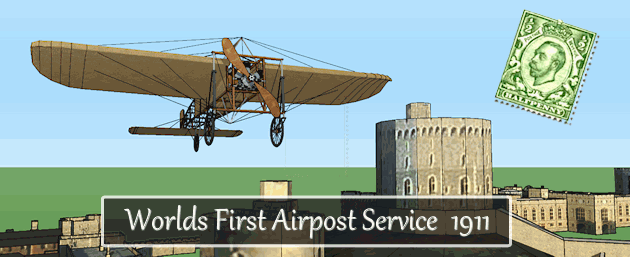
World War I Canadian Lumberjacks are billeted in the great park and chop down some of Windsor’s 1000 year old Oak trees.
Royal family adopts the town’s name as their own
The royal family change their name from Saxe-Coburg-Gotha to Windsor in 1917 so as to fit more closely with the national anti-german sentiment..
Christmas 1938 saw the Royalty Theatre (since renamed as the Theatre Royal) hosting the pantomime Cinderella, featuring comic Angus Watson as Buttons.
During the second World War, high explosive bombs and V1 and V2 missiles fell on the town. A crater caused by a bomb dropped on 24th October 1940 at 5.30am can still be seen at the corner of Clarence Crescent and Clarence Road.
At the old fire station (now an arts centre) on Peascod Street you can see anti-gas ventilators, installed by Windsor Borough Council in 1939 at the outbreak of WWII.
On September 30th 1940 Oberleutenant Karl Fischer of Jagdgeschwader 27 was flying his Messerschmitt 109 on a bomber escort mission to London. After being hit in the radiator and fuel tank he attempted to land in Windsor great park.
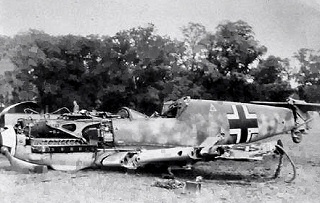
The plane overturned and was later righted, and put on display at the top of the long walk. Locals paid sixpence a time to view the plane and the money raised went to the local Hurricane Fighter Fund.

Coincidentally, the designer of the Hawker Hurricane was Sidney Camm who himself had been born in Windsor.
A bomb fell in Vansittart Road close to Maidenhead Road killing local resident Bill Wing who was riding his bicycle when the bomb fell.
Windsor’s population trebled during the twentieth Century. Slum dwellings close to the town centre were replaced by a massive block of flats called Ward Royal, now considered by many to be the second ugliest buildings in Windsor. Not all history was lost when they built the estate however, A little way along the pathway by the boundary wall on the southern side of the Ward Royal housing estate you can see the remains of the end walls of air raid shelters. A plaque marks the spot where Sidney Camm (together with his brothers) built a full size glider at the age of 19 years old.
Bridge closes to motor traffic
In 1970 the bridge joining Windsor and Eton was closed to vehicles and has remained a pedestrian bridge ever since.
Her Majesty’s Annus Horribilis
A massive Fire breaks out at Windsor Castle on 20 November 1992 the 45th wedding anniversary of the Queen and the Duke of Edinburgh. Over 100 rooms in the Castle were badly damaged or destroyed. The fire took 250 firefighters some 15 hours to extinguish. After five years of rennovation work coting £37 million Windsor castle reopens to visitors.
In 2007 Windsor was recorded as the 19th most expensive place to live in England.
The Windsor Triathlon attracted record crowds in June.
In 2009 for the 4th year running a 200 ft Ferris Wheel was placed on Alexandra Gardens during the summer to afford visitors an elevated view of the town.
2012 the Olympic Games came to town, with Eton Dorney rowing lake staging canoe sprint and rowing events. A temporary bridge across the Thames and 20,000 additional seats were needed for spectators.
In October 2012 Windsor appointed its first official Town Crier in more than a Century when Chris Brown was offered the role.
Saturday 14 September 2013 a series of Willow Arches were installed at the Castle End of The Long Walk to celebrate the Queen’s Jubilee.

On 21st April 2015 Her Majesty celebrated her 90th birthday with a royal walkabout through Windsor. Tens of thousands of well-wishers lined the route. At the Guildhall she was invited by the Mayor to cut a cake.
It was just three years later that Windsor would, in terms of sheer numbers have its biggest day ever. Prince Harry and Meghan Markle married in St George’s Chapel On the 19th May 2018. 120,000 people witnessed the subsequent subsequent drive through town. An estimated 8.9 million UK viewers watched the event on live television.

In 2020 Coronavirus struck the nation and two periods of lockdown had a huge effect on local businesses. Those shops able to stay open had prominent signs reminding the public of the social distancing and mask wearing rules. Windsor’s coach park was empty of vehicles for month after month and Peascod street was often devoid of shoppers. On the plus side, There was a huge reduction in planes flying in and out of Heathrow. This was a change that residents who hated the constant noise of the jets appreciated. Positive vaccine trial results gave hope that 2021 might see the town slowly returning to some kind of normal.
In 2022 Windsor was once more able to think about gathering for some much needed celebration. Her Majety’s Platinum Jubilee would give the town the excuse it needed to let its hair down and party.
